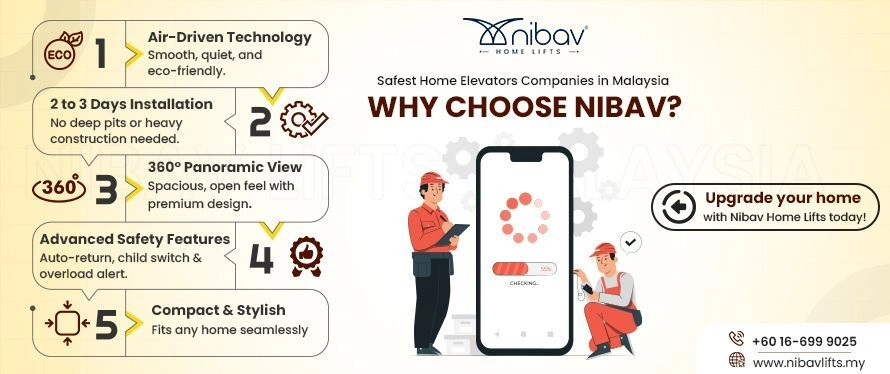What is a Lift?
A lift is a vertical transportation system commonly used in buildings to move people between floors. In Malaysia and other countries that follow British English, the term lift is widely recognized. Lifts are usually installed in residential homes, office buildings, or low-rise structures. They can be compact, efficient, and often require less space and power than commercial elevators. Lifts are designed with safety features such as stop buttons, emergency lighting, and overload sensors.
What is an Elevator?
An elevator serves the same basic purpose as a lift: moving passengers vertically within a building. The key difference lies in the terminology—elevator is the American English equivalent of “lift.” Elevators are often associated with high-rise buildings, malls, hospitals, and large office towers. They are typically larger in size, have higher weight capacities, and include advanced technology and safety systems like automatic doors, emergency brakes, and computerized control panels.
Difference Between Lift and Elevator
While lift and elevator refer to the same concept, the main differences include:
| Category | Lift | Elevator |
|---|---|---|
| Terminology | British English term; commonly used in Malaysia and Commonwealth nations | American English term; widely used in the U.S. and other regions |
| Design | Often has an open cab with safety panels; may not be fully enclosed | Fully enclosed cab operating within a complete vertical shaft |
| Capacity | Usually smaller; suitable for 2–4 persons or specific needs | Larger capacity; designed for multiple people or heavy loads |
| Common Usage | Low-rise buildings, homes, or for mobility assistance | High-rise buildings, commercial complexes, hospitals, malls |
| Safety Features | Basic safety systems (stop button, overload protection, power backup) | Advanced safety systems (emergency brakes, alarms, sensors) |
| Installation | Easier and faster; minimal structural changes required | Complex; needs shaft, pit, and often a machine room |
| Cost | Lower overall cost; budget-friendly for small buildings | Higher cost due to size, safety, and engineering complexity |
| Power Consumption | Generally consumes less power | May require more power, especially in large systems |
| Maintenance | Easier and less frequent maintenance | Requires scheduled professional servicing and checks |
| Regional Preference | Preferred term and system for residential users in Malaysia | Used in technical specs from American manufacturers and international brands |
What is The Difference Between an Elevator and a Lift Structure?
The structural difference between an elevator and a lift often comes down to installation complexity and building requirements:

- Elevator Structure: Elevators generally require a dedicated shaft, pit, and sometimes a machine room. They need extensive civil work and are better suited for new construction or large commercial buildings.
- Lift Structure: Home lifts or platform lifts can often be installed with minimal modifications. Many modern lifts are machine-room-less (MRL) and can be placed directly on the ground floor without a deep pit or heavy construction.
So, the structural setup depends on the type of building and the intended use of the system.
The Cost of the Lift and Elevator
The cost of a lift or elevator depends on several factors including size, capacity, technology, and installation complexity.
- Lifts (especially home lifts) are generally more affordable, with prices ranging based on model and customization. They’re ideal for residential users in Malaysia looking for practical mobility solutions.
- Elevators, on the other hand, are more expensive, especially when built for high-rises or public access. Costs are higher due to materials, safety regulations, labor, and structural alterations.

